Top Photo: M-1 helmet and liner of Captain Leonard Schroeder, Jr., the first American soldier on shore from a landing craft on D-Day. Gift in Memory of Col. Leonard T. Schroeder Jr.
The first man…a label that frequently demands acclaim and a place in history. For US Army Captain Leonard T. Schroeder Jr., this distinction also brought included danger.
The commanding officer of Infantry Rifle Company F, 2nd Battalion, 8th Infantry Regiment, 4th Infantry Division, Schroeder led one of the Landing Craft, Vehicle Personnel (LCVPs) approaching Utah Beach on D-Day in the first wave. US air support was still shelling the beach as the group of 20 LCVPs proceeded through the rocky waters to shore. Schroeder’s LCVP hit a crater formed by the incessant shelling and the ramp dropped, signaling to the 32 men on board that it was time to make their assault. Schroeder was the first man down the ramp and straight into waist deep water. As he trudged toward the shoreline, holding his weapons aloft, his M-1 helmet stayed firmly affixed to his head as he tried to avoid enemy fire.
Their objective was to break up the German seawall and move inland to capture the town of Sainte-Marie-du-Mont. The task of assaulting Utah Beach was entrusted to the 4th Infantry Division, comprised of prewar enlistees and officers who had been training for this type of offensive for years. The assault proved successful, despite landing 2,000 yards away from their intended target. Schroeder, undeterred by a gunshot wound to his left arm, continued the advance, leading his men off the beach and further inland. After suffering a second wound in the same arm, he woke up on a stretcher tagged with a medical recommendation for amputation. Schroeder quickly destroyed the tag and refused morphine during his evacuation to England, determined to stay awake and plead with the doctors not to amputate. While the doctors saved his arm, the injury prevented Schroeder from returning to his unit. He returned stateside and continued to support the war effort through bond drives.
-

M-1 helmet and liner of Captain Leonard Schroeder, Jr., the first American soldier on shore from a landing craft on D-Day. Gift in Memory of Col. Leonard T. Schroeder Jr.
-

M-1 helmet and liner of Captain Leonard Schroeder, Jr., the first American soldier on shore from a landing craft on D-Day. Gift in Memory of Col. Leonard T. Schroeder Jr.
Throughout the assault, Schroeder’s M-1 helmet, painted with the familiar Ivy Cross of the 4th Infantry and his Captain’s insignia, remained securely in place. The interior helmet liner retains the markings of his WWII insignia, while Schroeder repainted the exterior helmet shell, likely during his stint leading War Bond drives or his subsequent 30 years of military service.
For his actions on D-Day, Schroeder was awarded the Silver Star and recognized as the first American to land on the beaches of Normandy. Schroeder always said that while he was the first man on the beach from a landing craft, the paratroopers and Seabees already ashore were the true first Americans in France. Additionally, Schroeder always emphasized the heroic service of his fellow soldiers who never made it home.
Erin Scheaffer
Erin is a graduate of the University of Leicester with a Masters in Archaeology and Heritage.
Cite this article:
MLA Citation:
APA Citation:
Chicago Style Citation:
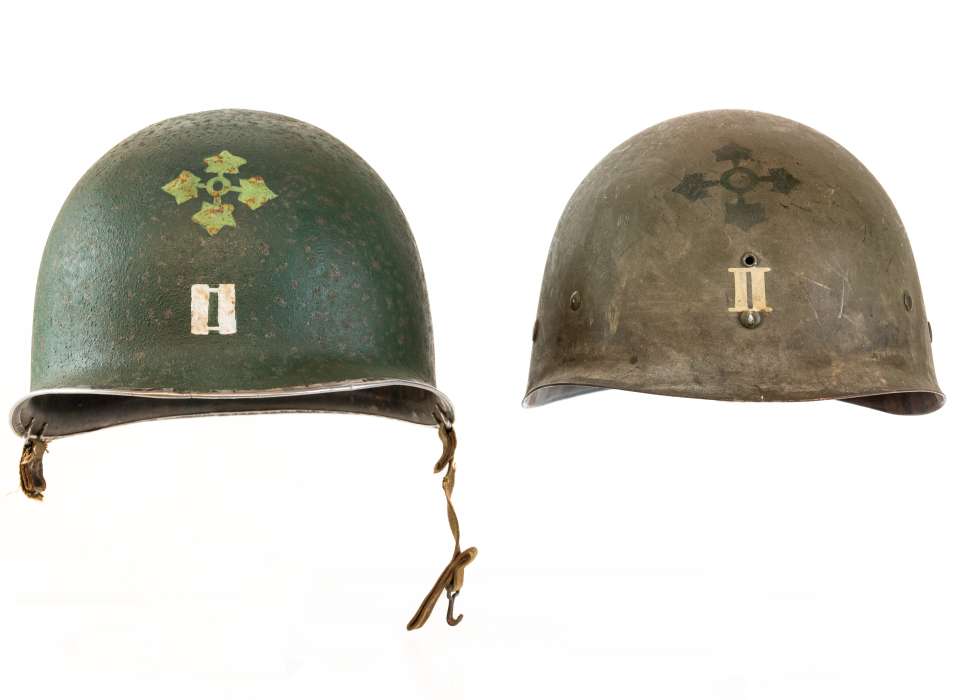
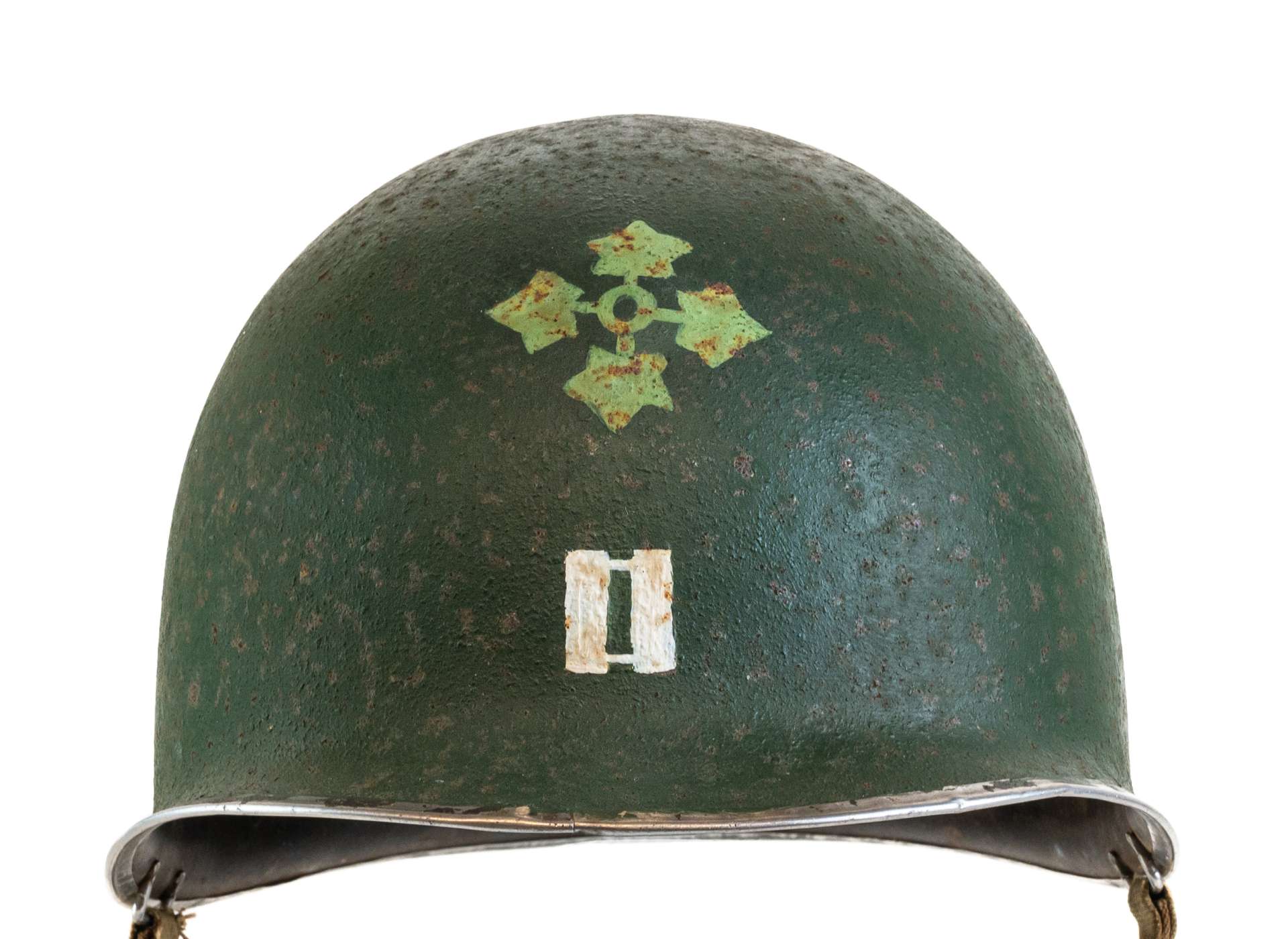
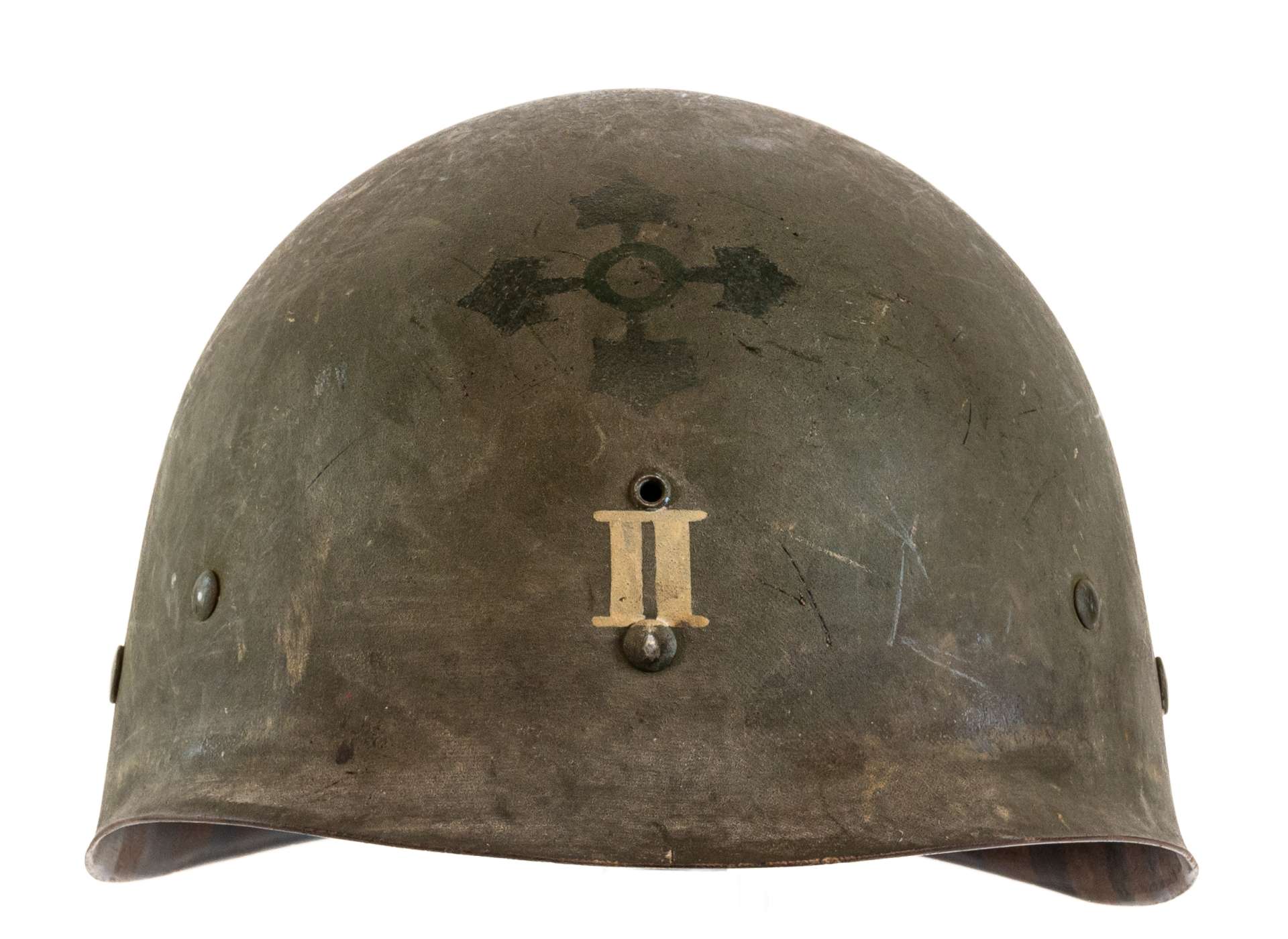
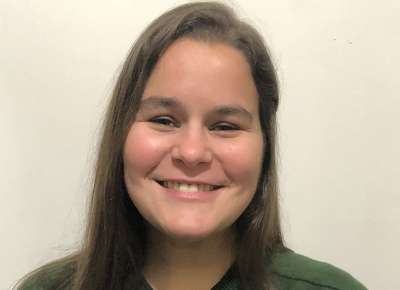
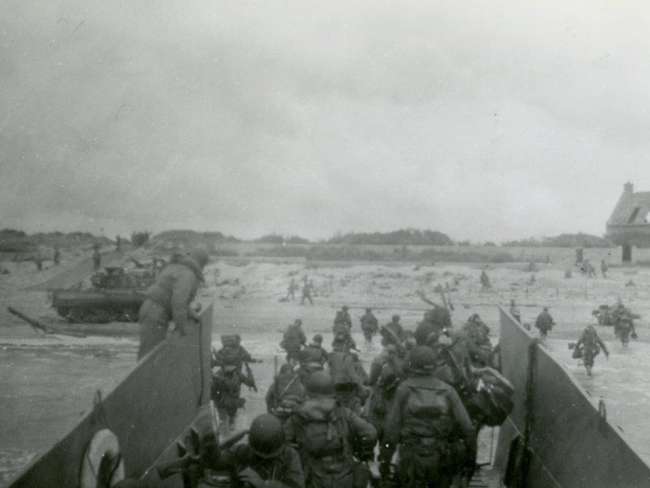
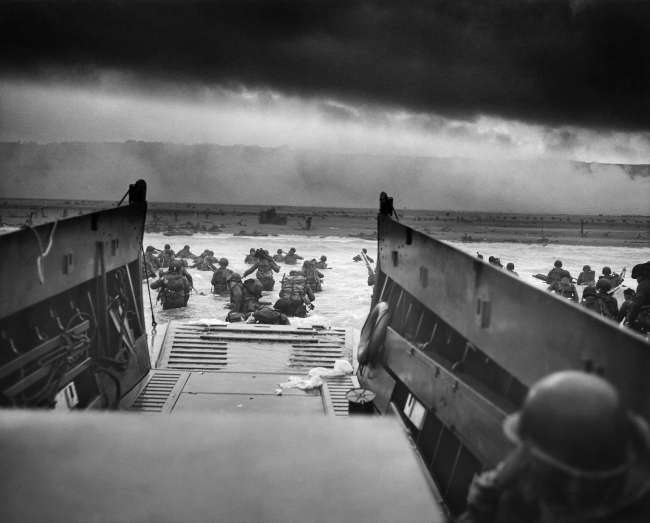
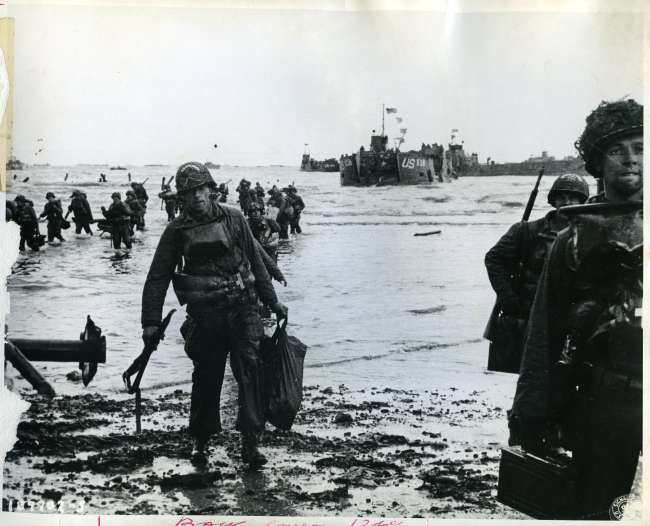
![Max Fuchs, New York City cantor, sings as Rabbi Sydney [sic] Lefkowitz, Richmond, VA, conducts the first Jewish services from Germany.](/sites/default/files/styles/max_650x650/public/2025-10/image1.jpg)






